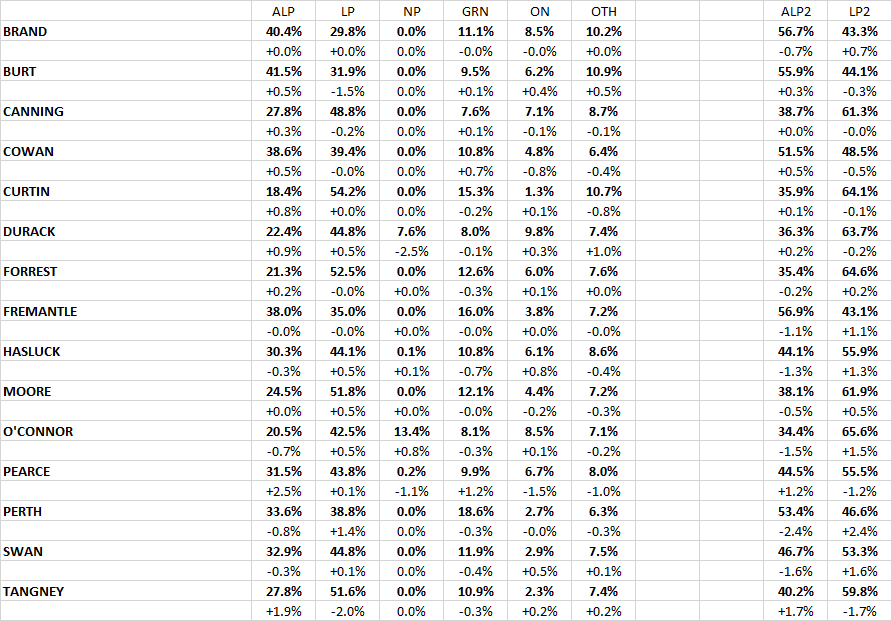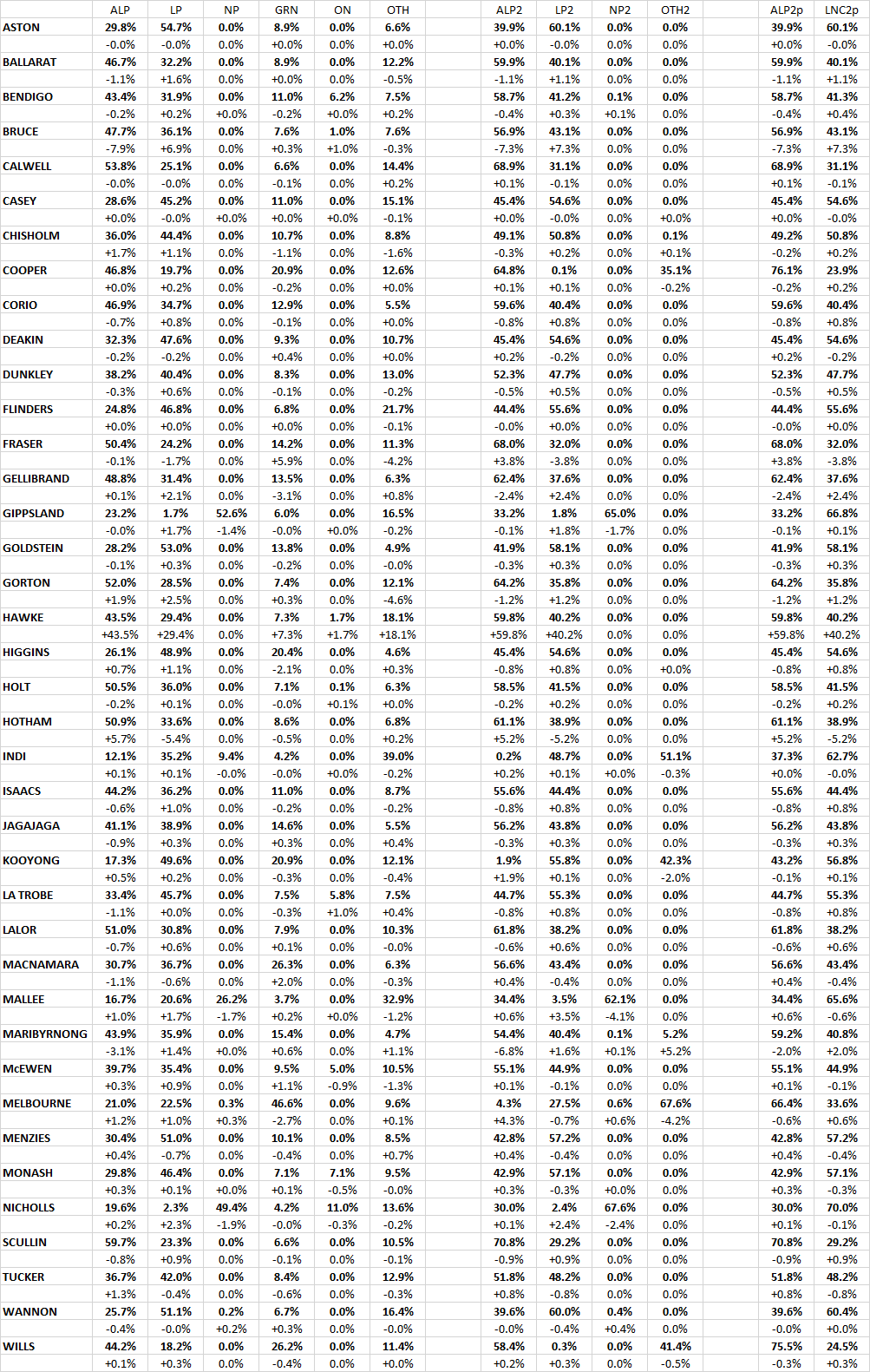It’s been a busy week on Poll Bludger, which a new thread on the US election joining posts on state polls in Victoria, Western Australia and Queensland. Meanwhile at federal level:
• The federal redistribution for New South Wales has been finalised, with only very minor adjustments made to the boundaries proposed in June, none of which affect my calculations of the new margins by more than 0.1%. Certainly there has been no revision to the abolition of North Sydney, held by teal independent Kylea Tink. The only redistribution process still in train is that for the Northern Territory, charged with drawing a new boundary between its two seats of Solomon and Lingiari, for which a proposal should be published shortly.
• The Liberal candidate for the crucial Melbourne seat of Chisholm will be Katie Allen, who was the member for Higgins from 2019 until her defeat by Labor’s Michelle Ananda-Rajah in 2022. Allen was endorsed on the weekend by the state party’s administrative committee, which was charged with ratifying local party preselection processes that were conducted before new boundaries revealed that Higgins, for which Allen had again won endorsement, was to be abolished. The decision came at the expense of Monash councillor Theo Zographos, who was last year preselected unopposed for Chisholm.
• Ronald Mizen of the Financial Review reports the looming preselections for the Melbourne seats of Maribyrnong and Gorton, respectively to be vacated with the retirements of Bill Shorten and Brendan O’Connor, will be shaped by a long-standing agreement that the Left will take Gorton from the Right when O’Connor retires, while the Left will take “the next safe Right seat that becomes available”. The matter will be determined by the party’s national executive, which has again taken over the federal preselection process from the Victorian branch. Maribyrnong is considered likely to go to Jo Briskey, national co-ordinator of the Left faction United Workers Union, although The Age reports she “could face a challenge from Moonee Valley mayor Pierce Tyson”.
• In Gorton, the Labor preselection appears to be developing into a contest between Alice Jordan-Baird, a climate change and water policy expert, and Ranka Rasic, the mayor of Brimbank. The two candidates are back by rival sub-factions of the Right, the former with that of Richard Marles and the Transport Workers Union, the latter with Bill Shorten and the Australian Workers Union. James Massola of The Age reports the matter could be decided by a third Right union, the Shop Distributive and Allied Employees Association, supporting Rasic and the AWU in the interests of checking the rising power of the TWU.




